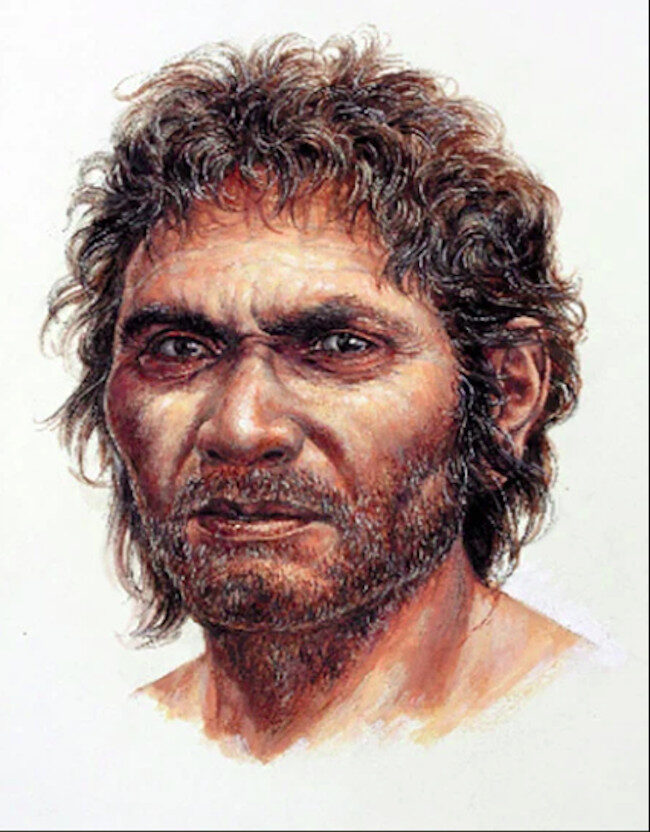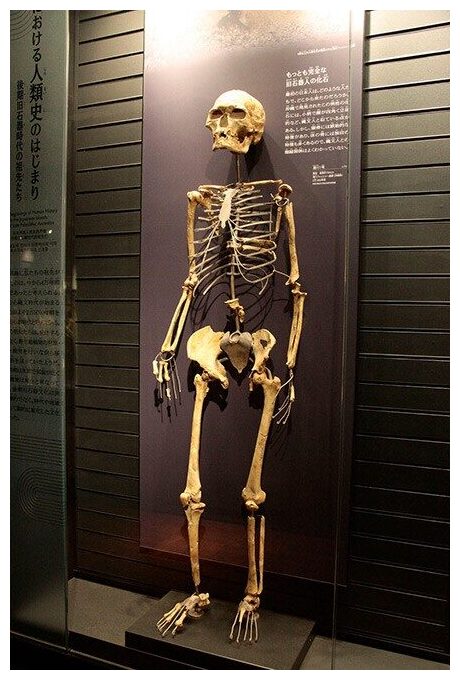
According to current mainstream theory, Japanese have mixed origins in the Jomon people known for their distinctive pottery culture (c. 14500 B.C.-1000 B.C.) and the Yayoi people with their own pottery culture (1000 B.C.-A.D. 250).
The latest study indicates the origins of Japanese can be traced to a more distant past.
Minatogawa refers to people whose remains were unearthed in Okinawa Prefecture in 1970. Named after the site where the bones were discovered, the Minatogawa people are among the few Paleolithic humans whose remains have so far been discovered in Japan.
They were small in stature, standing around 150 centimeters. Narrow-shouldered, they had a sturdy lower-body skeletal build, which experts believe made them suited to running on barren land.
DNA analysis and other studies support the theory that modern Japanese have mixed origins in Jomon hunter-gatherers who inhabited broad areas of Japan from Hokkaido to Okinawa between 15,000 and 3,000 years ago and the Yayoi farming people, who arrived later from the Asian mainland.
What remained a mystery was the relationship with the Minatogawa people, who lived thousands of years before the Jomon people.
Unearthed human remains and archaeological evidence alone are not sufficient to prove a direct ancestral link due to the possibility that the Minatogawa people may have died out or moved elsewhere, the researchers said.

Researchers from the Graduate University for Advanced Studies, Toho University and other institutions studied mitochondrial DNA, which is relatively easy to analyze.
A mitochondrion, a part of a cell that produces energy, has its own DNA. Mitochondrial DNA is passed down from mothers to their children and contains region-specific vestiges due to mutations, which allows origins of populations to be traced.
The researchers extracted DNA from the well-preserved complete skeleton of an adult male codenamed Minatogawa 1.
Analysis of Minatogawa 1's DNA identified a genetic type ancestral to DNA sequences commonly found in modern Japanese as well as Jomon and Yayoi people.
The researchers concluded that modern Japanese likely have distant ancestral ties with Minatogawa people.
They also studied the DNA of 2,000 or so Japanese, but none was found to be a direct descendant of Minatogawa 1 with shared genetic characteristics.
The latest study is the first to determine the genetic information of a Minatogawa individual.
"Our study found a likely genetic continuity among the human populations of the Japanese islands all the way from the Paleolithic age down to the present day," said Jun Gojobori, a lecturer of physical anthropology at the Graduate University for Advanced Studies and one of lead authors of the study.
He said future studies could find a direct descendant of a Minatogawa individual among modern Japanese.
"We hope to study the bones of more Paleolithic people to better understand the origins of the Japanese," Gojobori added.
The research results were published June 13 in Scientific Reports, a science journal, and can be seen here.



Reader Comments
near as I can tell.. I have been right for 20.000 years. the Japanese are from Japan.
[Link]
[Link]
The Vapours